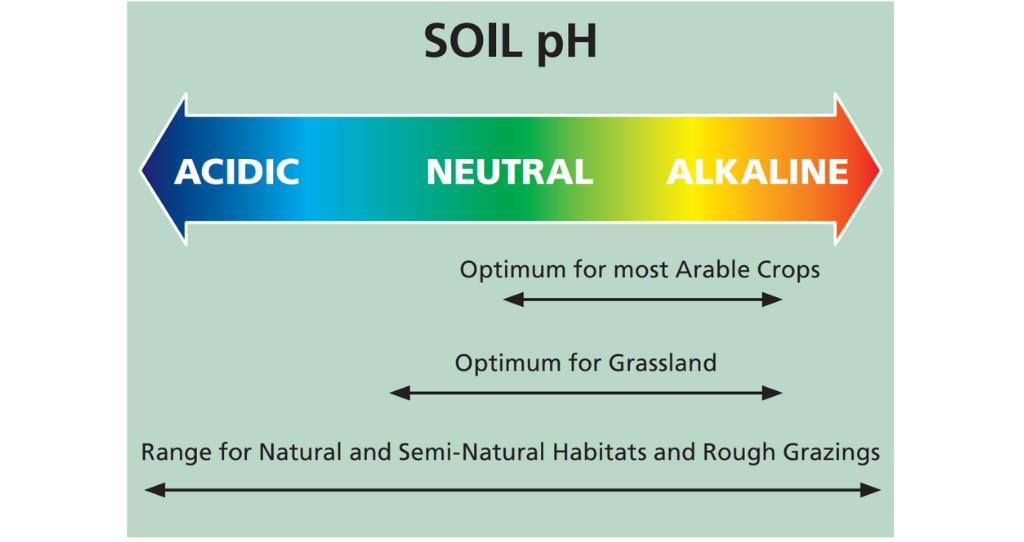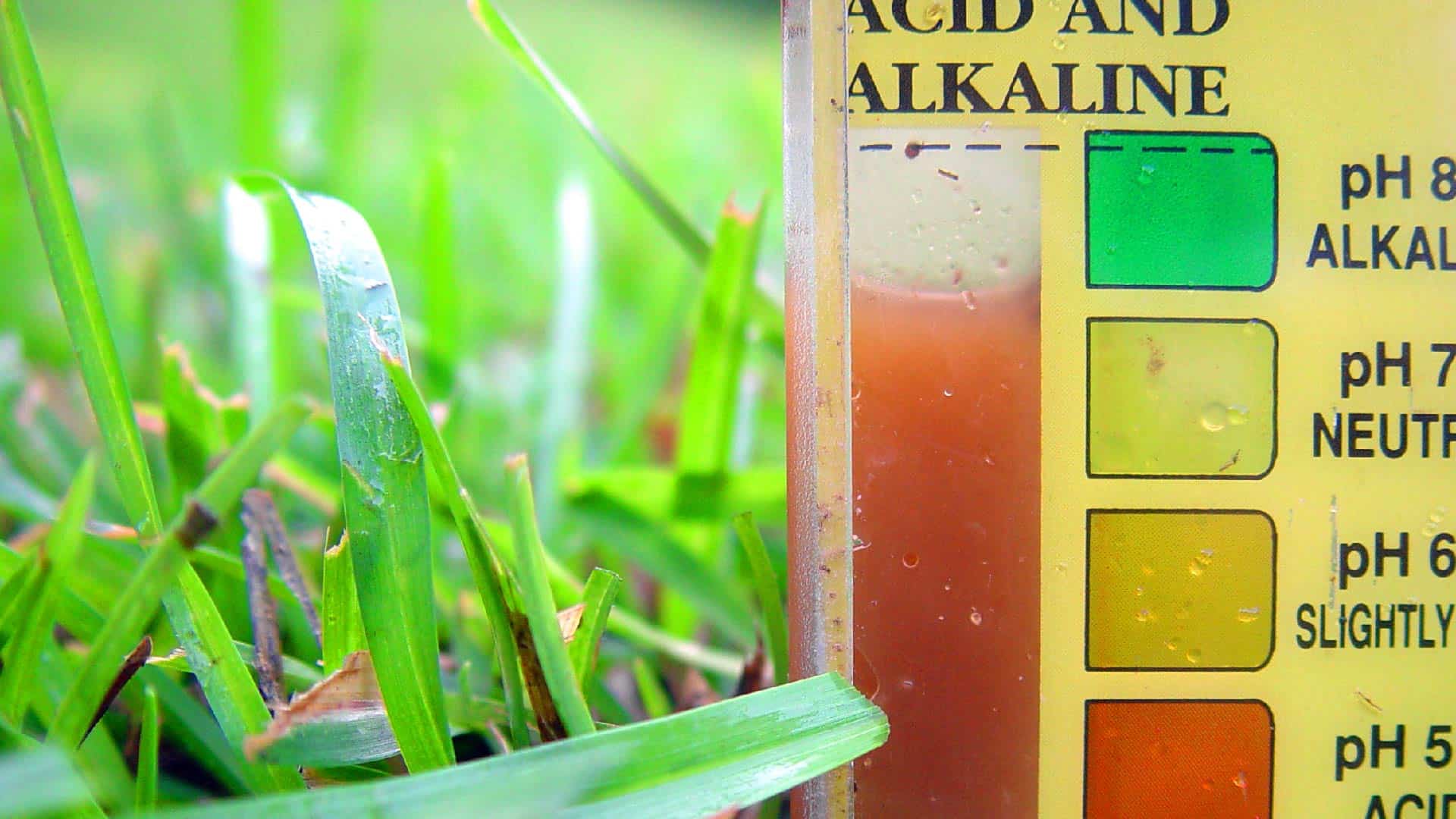The Importance of Assessing Soil Acidity
Understanding the pH level of soil is crucial for maintaining healthy plant growth and ensuring optimal nutrient availability. The pH scale ranges from 0 (highly acidic) to 14 (highly alkaline), with 7 being neutral. Most plants thrive in slightly acidic to neutral soil, between 6.0 and 7.0 pH. Testing the soil pH is essential to identify any imbalances that may hinder plant growth and nutrient uptake. In this comprehensive guide, we will discuss various methods to measure soil pH accurately, including using a soil pH testing kit or a soil pH meter. By following these methods, you will be able to maintain the ideal pH levels for your plants, promoting their overall health and productivity.
What Is Soil pH and Why Does It Matter?
Soil pH is a critical factor in gardening and agriculture, as it indicates the acidity or alkalinity of soil. Ranging from 0 (highly acidic) to 14 (highly alkaline), with 7 being neutral, soil pH significantly impacts soil fertility and plant growth. Most plants, including vegetables, fruits, and flowers, prefer slightly acidic to neutral soil, between 6.0 and 7.0 pH. At these pH levels, essential nutrients are most available for plant roots to absorb. Conversely, when soil pH deviates from the optimal range, certain nutrients become less accessible, potentially leading to nutrient deficiencies and hindered plant growth.
For example, at low pH levels (acidic soil), micronutrients like manganese, copper, and zinc become more soluble and may reach toxic levels for plants. On the other hand, at high pH levels (alkaline soil), phosphorus, potassium, and molybdenum become less available, while calcium and magnesium become more soluble. By understanding the pH level of your soil, you can take appropriate measures to ensure your plants receive the necessary nutrients for optimal growth and development.
Gathering the Essential Tools and Materials
To measure soil pH accurately, you will need several tools and materials. These items are readily available at garden supply stores, home improvement centers, or online. Here’s a list of the essential tools and materials:
- Soil pH testing kit or soil pH meter: These tools are designed to measure the pH level of soil. Testing kits typically include a test tube, a color chart, and a small amount of testing solution, while pH meters are handheld devices that provide instant pH readings.
- Distilled water: Use distilled water to mix with your soil samples, as it is free from minerals and other impurities that can affect the pH reading.
- Small container or sealable plastic bag: A clean container or plastic bag is necessary to hold and mix the soil sample with distilled water.
- Mixing spoon or stir stick: A clean spoon or stir stick helps mix the soil and distilled water, ensuring a consistent pH reading.
By gathering these tools and materials, you will be well-equipped to measure the pH level of your soil and make informed decisions about your plants’ nutritional needs.
Method 1: Soil pH Testing Kit
Soil pH testing kits are widely available and provide an affordable way to measure soil pH levels. These kits typically include a test tube, a color chart, and a small amount of testing solution. To use a pH testing kit, follow these steps:
- Collect a soil sample: Gather a representative soil sample from the area you want to test. Remove any debris, such as rocks or plant material, and allow the soil to dry for 24 hours.
- Prepare the soil sample: Using a clean container or sealable plastic bag, mix a portion of the dried soil with distilled water. The recommended ratio is usually 1 part soil to 2 parts distilled water. Mix thoroughly to create a slurry.
- Perform the pH test: Add the testing solution to the soil and water mixture in the test tube, following the instructions provided with the kit. Shake the mixture gently and allow it to sit for the recommended time. This process will cause a chemical reaction that changes the mixture’s color.
- Compare the color to the chart: Hold the test tube up to the color chart provided with the kit and compare the mixture’s color to the chart’s colors. The chart’s colors correspond to specific pH levels, allowing you to determine the pH level of your soil.
By following these steps, you can accurately measure the pH level of your soil using a testing kit. Remember to interpret the results carefully and consider any necessary adjustments to optimize plant growth.
Method 2: Soil pH Meter
Soil pH meters offer a convenient and eco-friendly alternative to testing kits. These devices measure the pH level of soil directly, without the need for mixing solutions or comparing colors. To use a pH meter, follow these steps:
- Choose the right pH meter: Select a soil pH meter designed for measuring soil pH levels. Some pH meters are designed for liquids, so ensure you have a meter specifically designed for soil testing.
- Calibrate the pH meter: Before using the pH meter, calibrate it according to the manufacturer’s instructions. Calibration typically involves immersing the meter in a solution with a known pH level, such as a buffer solution, and adjusting the meter’s settings to match the solution’s pH.
- Test the soil: Insert the pH meter’s probe into the soil, ensuring good contact between the probe and the soil. Some pH meters require you to moisten the soil before testing, while others can be used on dry soil. Follow the manufacturer’s instructions for your specific pH meter.
- Read the pH value: After a few moments, the pH meter will display the pH value of the soil. Record the value for future reference.
Soil pH meters are user-friendly and provide quick, accurate pH readings. However, it is essential to maintain and store the meter properly to ensure its longevity and accuracy.
Interpreting Soil pH Results and Adjusting Soil pH
After measuring your soil pH using a testing kit or meter, you may need to adjust the pH level to optimize plant growth. The necessary adjustments depend on your soil pH test results and the preferred pH range for the plants you are growing. Here are some guidelines for raising or lowering soil pH and maintaining optimal levels:
- Raising soil pH (making soil less acidic): To raise soil pH, apply a liming material, such as ground agricultural limestone, hydrated lime, or wood ashes. The amount of lime needed depends on the soil type, current pH level, and desired pH level. Follow the recommendations provided by a soil test report or consult a local extension service for guidance.
- Lowering soil pH (making soil more acidic): To lower soil pH, apply elemental sulfur, aluminum sulfate, or sulfuric acid. As with liming materials, the amount needed depends on the soil type, current pH level, and desired pH level. Be cautious when using sulfuric acid, as it can be hazardous and may require protective equipment.
- Maintaining optimal soil pH: To maintain optimal soil pH, use appropriate fertilizers and organic matter. Some fertilizers, such as those high in ammonium, can lower soil pH, while others, such as those high in nitrates, can raise soil pH. Adding organic matter, such as compost or well-rotted manure, can help buffer soil pH and improve soil structure and fertility.
By understanding your soil pH test results and implementing the appropriate adjustments, you can create an ideal environment for healthy plant growth and optimal nutrient availability.
Factors Influencing Soil pH and Its Impact on Plant Growth
Soil pH is influenced by various factors, which can impact plant growth and nutrient availability. Understanding these factors can help you maintain optimal soil pH levels and promote healthy plant growth. Here are some key factors that influence soil pH:
- Rainfall: Acidic rain can lower soil pH, while alkaline rain can raise it. Areas with high rainfall tend to have more acidic soil due to the leaching of basic elements, such as calcium and magnesium, which buffer acidity.
- Soil composition: The parent material of soil, such as rock or sediment, can influence soil pH. For example, soils derived from granite tend to be more acidic, while soils derived from limestone are typically more alkaline.
- Organic matter content: Organic matter, such as decomposing plant material, can affect soil pH. Decomposition releases acids that can lower soil pH, while the addition of certain organic materials, like lime, can raise soil pH.
- Microbial activity: Soil microorganisms can influence soil pH by producing or consuming acids or bases during their metabolic processes. Some microorganisms thrive in acidic soils, while others prefer alkaline soils, which can further impact soil pH.
- Human activities: Human activities, such as the application of fertilizers, lime, or sulfur, can alter soil pH. For example, the excessive use of nitrogen-based fertilizers can lower soil pH, while the addition of lime can raise soil pH.
By understanding these factors, you can take steps to manage soil pH and create an ideal environment for plant growth. Regularly testing your soil pH and making adjustments as needed can help ensure optimal nutrient availability and support healthy plant growth.
Long-Term Soil pH Management Strategies
Maintaining optimal soil pH over time is essential for healthy plant growth and long-term soil fertility. Here are some strategies for monitoring and managing soil pH in the long term:
- Regular testing: Test your soil pH at least once a year, ideally in the fall or early spring, to monitor changes and identify any necessary adjustments. This will help you stay on top of any pH fluctuations and ensure that your soil remains within the optimal range for your plants.
- Organic matter management: Incorporate organic matter, such as compost, well-rotted manure, or leaf litter, into your soil regularly. Organic matter helps improve soil structure, fertility, and water-holding capacity, and it can also help buffer soil pH fluctuations.
- Appropriate fertilizers: Use fertilizers that are specifically designed for your soil type and pH level. Some fertilizers can help raise or lower soil pH over time, so choose them carefully. Avoid using excessive amounts of fertilizers, as this can lead to nutrient imbalances and soil pH fluctuations.
- Cover crops: Plant cover crops, such as clover or rye, to help improve soil structure, reduce erosion, and add organic matter to the soil. Cover crops can also help maintain soil pH levels by fixing nitrogen and adding other essential nutrients to the soil.
- Crop rotation: Practice crop rotation to help maintain soil pH levels and prevent nutrient depletion. Rotating crops can help break disease cycles, improve soil structure, and promote healthy plant growth.
By implementing these long-term soil pH management strategies, you can help ensure optimal soil pH levels and support healthy plant growth for years to come. Remember that maintaining soil pH is an ongoing process, and regular monitoring and adjustments may be necessary to keep your soil within the optimal pH range.







